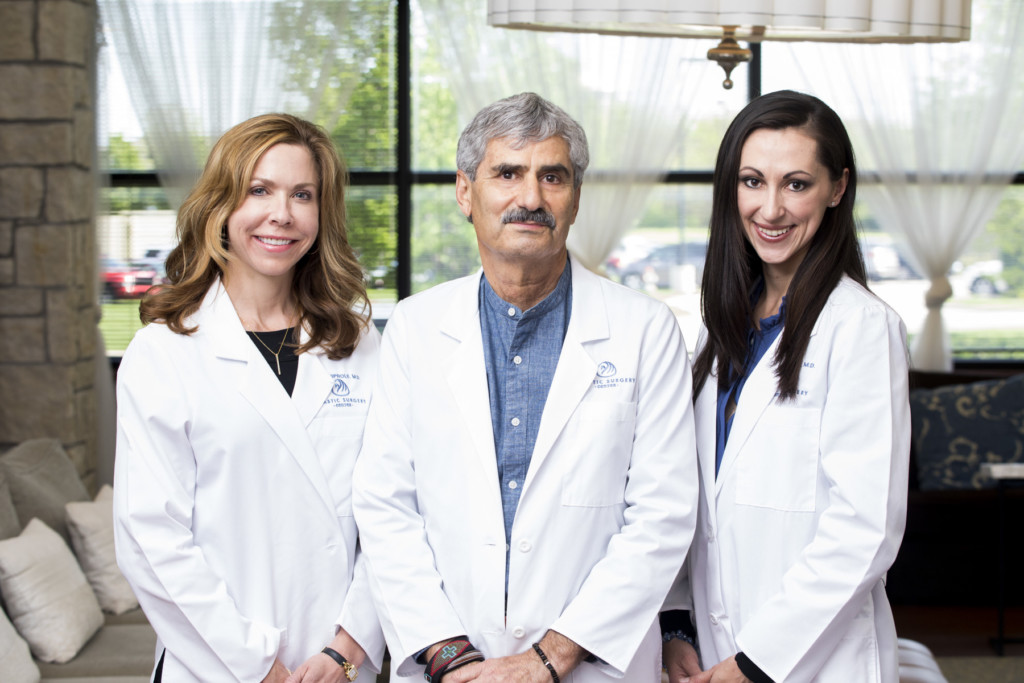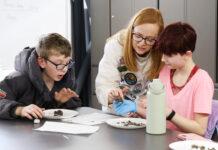 Deformities that happen during pregnancy and are present in babies at birth are called congenital anomalies. Oftentimes, these include hand deformities, and they are especially disabling for a child as he or she grows and begins to interact with the environment. For some babies, the deformity is minor, but for others, the deformity can be quite severe.
Deformities that happen during pregnancy and are present in babies at birth are called congenital anomalies. Oftentimes, these include hand deformities, and they are especially disabling for a child as he or she grows and begins to interact with the environment. For some babies, the deformity is minor, but for others, the deformity can be quite severe.
In this article, we look at the causes and treatments for children born with congenital hand anomalies and malformations.
What Causes Hand Anomalies?
Currently, the cause of hand anomalies and deformities is unknown. Sometimes they can be diagnosed early on in a pregnancy through ultrasound. Other times, they come as a surprise to parents during birth.
Overwhelmingly, parents are distressed by the presence of hand differences in their newborns. Sometimes, they feel guilty thinking they caused the problem. Mothers will worry it was something they did or ate. If the baby’s issues are a surprise, parents can even become angry with their health care provider for not diagnosing it early on.
It’s important to remember, though, that hand anomalies are no one’s fault. Most hand differences are not preventable, many can’t be detected before birth, and they are usually not hereditary.
The human hand is a complex organ made up of skin, muscle, tendon, vessels, nerves, and bone. As a baby’s hand forms, there’s an intricate symphony of growth, regression, and differentiation. Because of this complex process, errors sometimes occur leading to various congenital (born with) hand anomalies. The most common are:
- Polydactyly – an extra-digit, usually a pinky finger or a thumb
- Syndactyly – two fingers do not separate together
- Hypoplastic thumb – thumb is proportionately smaller than the other digits
Do Babies Have Trouble Adapting?
Depending on the type and the extent of the hand anomaly, some babies can adapt and function well. Other children will face challenges as they grow. These may include:
- Delayed or deficient motor skills
- A difficulty with daily activities such as basic play and self-care
- Emotional and social isolation as other children may tease and bully them
- The inability to participate in some types of exercise or sports
What Are the Treatment Options?
If your child is happy and functioning well, you may not need treatment. But, if your child wants to do things and can’t, you do have treatment options.
If your baby is born with a hand deformity, we recommend early intervention. Schedule an appointment with a plastic surgeon to discuss your options and form a treatment plan. You may find surgery is necessary right away, or that it can wait. It may also be that a prosthetic device can help improve function.
Types of Congenital Hand Deformities
Polydactyly is the most common hand anomaly, and it’s usually seen as an extra finger or ‘nubbin’ on the pinky finger side of the hand. The base of these extra digits can either be very thin or quite substantial. In either case, these require excision.
Hospital nurseries used to remove these nubbins by tying a thread around the base, which ultimately caused the extra ‘nubbin’ to fall off. However, this method of removal can lead to persistent irregularity and sensitivity in the area, as the nubbin (regardless of how small) carries a sensory nerve that can become irritated if tied off.
Plastic surgeons can completely excise the nubbin right in the office with your baby awake using numbing medicine. In children with an extra thumb, it’s a bit harder to remove it as the extra thumb tends to be well-formed and fused at the joint or the bone. Removal of these does require the operating room.
Syndactyly anomalies are seen as two adjacent fingers without a normal finger space. Syndactyly can be simple such as when a skin bridge exists between the digits, or it can be complex such as when bone, tendon, and blood vessels can be linking the two digits).
We recommend separating the digits between 12-18 months of age, when the child’s hand has grown some and before children start to develop fine motor control and manipulation. This involves going to the operating room to separate the finger. After surgery, we place children in a full cast to prevent disrupting the repair.
Some children can have a small thumb called a Hypoplastic thumb. In some children we hardly see a noticeable difference, while other children will be completely missing a thumb.
Treatment depends on the extent of the deformity. In children with a hardly noticeable difference who function well with their thumb and hand, no correction is required. In those with a noticeably smaller thumb, we can deepen the space between the thumb and index finger. In children with a very small or absent thumb, we use more complex reconstructive techniques.
Polydactyly, syndactyly, and hypoplastic thumb are just three of the most common types of congenital hand deformities. These and many others are treatable right here in Wichita at the Plastic Surgery Center.
To Conclude
Your child is unique and wonderful. And, each hand difference is unique, so you’ll find treatment options are designed around your child’s individual needs. The goal of any surgery or treatment is to improve your child’s ability to function and improve the appearance of the hand, thus improving your child’s self-esteem.
Our plastic surgeons can discuss treatment options and the outlook for your child’s mobility. Their goal is to improve function, appearance, and healthy development.
The team at the Plastic Surgery Center is here to help. If you or your pediatrician has concerns about your child’s hands or shape, call us for more information or to schedule an appointment at the Plastic Surgery Center by calling 316-688-7500 or visiting pscwichita.com to request your appointment.
You Deserve Expert Guidance and Exceptional Results.
Plastic surgery involves many choices. The most important is selecting a surgeon you can trust. Expect exceptional results when you have your procedures performed by plastic surgeons who are certified by the American Board of Plastic Surgery and who are members of the American Society of Plastic Surgeons like Bruce Ferris, MD, Amy Sprole, MD, and Nataliya Biskup, MD. These specially trained doctors have at least six years of surgical training and experience, with a minimum of three years of plastic surgery.
By Bruce Ferris, MD, Amy Sprole, MD, and Nataliya Biskup, MD





 The Plastic Surgery Center in Wichita, Kansas, is a product of a plastic surgery practice started in 1968. Celebrating 50 years in 2018, this makes it the longest-standing private plastic surgery practice in the state of Kansas. Drs. Bruce Ferris, Amy Sprole and Nataliya Biskup are board certified by the American Board of Plastic Surgery and bring years of experience and excellence to the field of plastic surgery. Each of the surgeons is highly trained and specializes in cosmetic and reconstructive surgery including the face, breast and body. With more than 60 years of combined training and experience, all three are uniquely qualified and exceedingly credentialed to perform your cosmetic or reconstructive procedure. In addition, the skin care department at the Plastic Surgery Center offers two highly skilled and experienced registered nurses and two medical aestheticians to take care all your skin care needs.
The Plastic Surgery Center in Wichita, Kansas, is a product of a plastic surgery practice started in 1968. Celebrating 50 years in 2018, this makes it the longest-standing private plastic surgery practice in the state of Kansas. Drs. Bruce Ferris, Amy Sprole and Nataliya Biskup are board certified by the American Board of Plastic Surgery and bring years of experience and excellence to the field of plastic surgery. Each of the surgeons is highly trained and specializes in cosmetic and reconstructive surgery including the face, breast and body. With more than 60 years of combined training and experience, all three are uniquely qualified and exceedingly credentialed to perform your cosmetic or reconstructive procedure. In addition, the skin care department at the Plastic Surgery Center offers two highly skilled and experienced registered nurses and two medical aestheticians to take care all your skin care needs.









